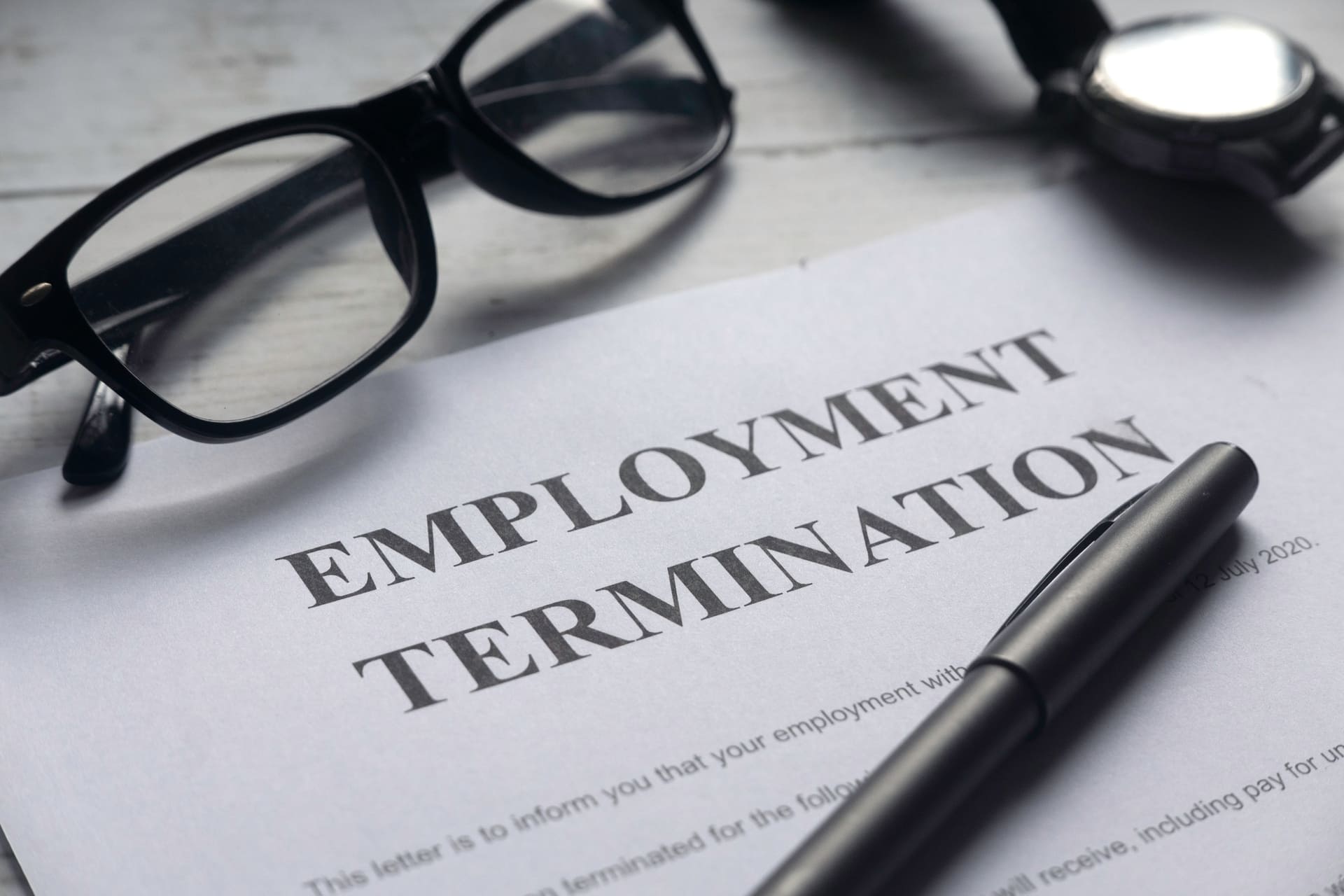Wrongful Termination Statute of Limitations in California

In California, you typically have two or three years from the date of your termination to file a lawsuit, depending on the type of violation that occurred.
Being wrongfully terminated is devastating, but understanding the wrongful termination statute of limitations gives you the power to fight back.
The emotional trauma of losing your job unfairly can leave you feeling powerless and confused about your next steps. Many people don’t realize that statutes of limitations create strict deadlines for seeking justice. Missing these critical time limits could mean losing your right to compensation forever, even if you have a strong case.
At Feher Law, we understand the urgency and complexity of wrongful terminations. Our experienced legal team has recovered over $100 million for clients who faced illegal treatment in the workplace. We know California’s employment laws and exactly how to fight for the justice you deserve.
Here are some of our recent employment law settlements that demonstrate our commitment to protecting workers’ rights:
- $1,400,000: Employment – Wrongful Termination, Los Angeles, Settlement
- $1,000,000: Wrongful Termination, Los Angeles, Settlement
- $7,000,000: Civil Rights, Los Angeles, Settlement
Our California wrongful termination lawyer is ready to fight for your rights and help you recover the compensation you deserve.
An Overview of the Statute of Limitations For Wrongful Termination in California
A statute of limitations is the legal time limit you have to file a lawsuit after being harmed. These deadlines exist to ensure evidence remains fresh and witnesses’ memories stay clear. They also provide legal certainty, allowing both parties to move forward after a reasonable period.
In wrongful termination in California cases, the statute of limitations for wrongful termination claims varies depending on what made your firing illegal. Most cases fall within a two to three-year window from your termination date, but the specific timeline depends on the underlying legal violation.
Recent 2024 updates to California employment laws have clarified administrative filing requirements, particularly those involving the California Civil Rights Department (CRD). Understanding these timeframes is essential, as courts strictly enforce California’s statute of limitations rules.
California’s legislature has set filing deadlines for wrongful termination claims through various statutes. The specific code section that applies to your case will determine the correct timeframe, and our legal team will review the facts to identify which deadlines apply to your situation.
Types of Wrongful Termination and Their Time Limits
California wrongful termination statute requirements vary significantly based on the legal theory underlying your case. Here are the most common violations and their respective time limits:
- FEHA Violations (3 years): Discrimination, harassment, or retaliation based on protected characteristics like race, gender, age, disability, or sexual orientation
- Public Policy Violations (2 years): Termination for refusing to break the law, reporting violations, serving jury duty, or filing workers’ compensation claims
- Breach of Implied Contract (2 years): Violation of written or verbal employment agreements, including employee handbook policies
- WARN Act Violations (3 years): Mass layoffs without proper 60-day notice to employees
- Federal Whistleblower Laws (varies): Range from 180 days to 4 years, depending on the specific federal statute involved
| Violation Type | Time Limit | Administrative Filing Required? | Court Filing Timeline |
|---|---|---|---|
| FEHA Retaliation/Discrimination | 3 years | Yes (CRD) | +1 year after right-to-sue |
| Public Policy Violation | 2 years | No | Direct to court |
| Breach of Implied Contract | 2 years | No | Direct to court |
| WARN Act Violation | 3 years | No | Direct to court |
| Federal Whistleblower | 180 days-4 years | Often required | Varies by law |
FEHA Retaliation Claims: The 3-Year Rule
The Fair Employment and Housing Act (FEHA) provides California’s strongest protections against workplace discrimination and harassment. When an employer retaliates against you for exercising rights under FEHA, you have three years from the date of the retaliatory action, such as termination, to file an administrative complaint with the California Civil Rights Department.
FEHA retaliation occurs when you’re fired for opposing discriminatory practices, filing complaints about workplace violations, or participating in investigations. Protected activities include reporting sexual harassment, requesting disability accommodations, taking family or medical leave, or challenging discriminatory policies.
💡 Hypothetical Scenario: A marketing manager reports her supervisor’s inappropriate comments about female employees to HR. Two weeks later, she received a negative performance review and was terminated for “poor attitude.” This timeline suggests potential Fair Employment and Housing Act retaliation, giving her three years to file.
The administrative process requires filing a complaint with the California Civil Rights Department first. After completing their investigation, you receive a right-to-sue letter granting an additional year to file a wrongful termination lawsuit in court. This two-step process means you could potentially have up to four years under the FEHA statute of limitations to resolve your wrongful termination claim in California.
Our Huntington Beach wrongful termination lawyer has extensive experience with FEHA claims and can guide you through both administrative and court processes.
Public Policy Violations: 2-Year Window for Justice
Public policy violations represent some of the most clear-cut wrongful termination cases in California. These occur when an employer fires you for doing the right thing or exercising fundamental legal rights. You have exactly two years from the date of termination to file a lawsuit directly in court, no administrative filing required.
Common violations of public policy scenarios include termination for serving jury duty, filing workers’ compensation claims, reporting safety violations, or refusing to commit illegal acts. California protects employees who choose lawful conduct over employer demands, even in at-will employment situations.
💡 Hypothetical Scenario: An accounting analyst notices financial irregularities at her company and reports them to a state regulatory agency. Two weeks later, she’s told her position is being eliminated due to “budget cuts.” However, internal emails and performance records suggest her job was secure — until she spoke up. This kind of timing, combined with strong documentation, could indicate wrongful termination in violation of public policy. With prompt legal action, a case like this can result in a substantial settlement.
California law strongly favors employees who face retaliation for upholding legal and ethical standards. Courts recognize that protecting these rights serves broader public interests beyond individual cases.
Breach of Implied Contract Claims
Employment contract violations create a two-year deadline for legal action, covering both written and implied agreements. Unlike at-will employment, implied contracts suggest termination requires good cause or specific procedures. These agreements often arise from employee handbooks, verbal promises, or established workplace practices.
Implied contracts under California Code of Civil Procedure § 339 are challenging to prove because most California workers are employed at-will. However, specific language in handbooks, consistent disciplinary procedures, or management statements about job security can create enforceable expectations. Courts examine the totality of circumstances to determine if implied contractual relationships existed.
Recent California court decisions have clarified that vague handbook language rarely creates implied contracts. However, detailed progressive discipline policies, promises of fair treatment, or specific termination procedures can establish contractual obligations that limit employer discretion.

Federal Law Considerations Relating to the Statute of Limitations on Wrongful Termination
Federal wrongful termination laws often impose different deadlines and procedures than California statutes. If your case involves both state and federal violations, understanding these timelines is essential:
- Sarbanes-Oxley Act (SOX): Protects whistleblowers at publicly traded companies who report fraud or securities violations. You must file an administrative complaint with the Department of Labor within 180 days, and you may have up to 4 years to bring a claim in federal court if not resolved.
- Title VII of the Civil Rights Act: Covers workplace discrimination based on race, color, religion, sex, or national origin. You typically have 180 days to file a complaint with the EEOC, or 300 days if a state agency (like California’s CRD) is also involved.
- Americans with Disabilities Act (ADA): Protects workers with disabilities from discrimination. Follows the same EEOC deadlines as Title VII (180–300 days depending on dual filing status).
- Family and Medical Leave Act (FMLA): Grants eligible employees unpaid leave for serious health or family reasons. You generally have 2 years to sue for violations, extended to 3 years if the employer’s actions were willful.
Federal wrongful termination cases in California are filed in U.S. District Court when based on federal law or when combined with state claims. Timing issues can be complex; federal and state deadlines may overlap or run separately, and missing one can limit your rights under the other.
The Administrative Complaint Process: What You Need to Know
Many employment laws require administrative filings before you can file a wrongful termination lawsuit. This process serves as an initial review mechanism and potential resolution opportunity outside of court litigation.
In California, most state-level complaints go through the California Civil Rights Department (formerly the DFEH), while federal cases typically begin with the Equal Employment Opportunity Commission (EEOC). Each agency has its forms, deadlines, and procedures that must be followed precisely.
Once filed, the agency may investigate, collect evidence, interview witnesses, and attempt mediation. If the issue isn’t resolved, a right-to-sue letter is issued, allowing you to take your case to court within a specified timeframe.
✔️ Working with these overlapping timelines can be complex, and missing a step can jeopardize your case. Our firm handles the entire administrative process on your behalf, ensuring every deadline is met and your rights are fully protected.
Contact our experienced legal team today for a free consultation and learn how our Torrance wrongful termination attorney can help you recover the compensation you deserve.
Real-World Examples: How Timing Affects Your Case
Understanding timing requirements through practical examples helps illustrate how different scenarios impact your limitations for wrongful termination claims.
Age Discrimination Under FEHA
💡 Hypothetical Scenario: A 58-year-old accountant with excellent performance reviews is suddenly terminated during a “restructuring” that primarily affects older employees. She has three years from the date of termination to file an administrative complaint with the Civil Rights Department, then an additional year to pursue court action if needed.
Safety Whistleblowing Under Public Policy
⚠️ Hypothetical Scenario: A construction worker reports unsafe scaffolding to OSHA and is fired the following week for “insubordination.” This public policy violation gives him exactly two years to file a lawsuit directly in court, with no administrative requirements.
What Happens If You Miss the California Wrongful Termination Statute of Limitations Deadline?
Missing limitations for wrongful termination claims typically result in permanent loss of your legal remedies. Courts strictly enforce these deadlines, and the statute of limitations has expired once the period passes, regardless of how strong your case might be.
Very limited exceptions exist for extending deadlines. The “discovery rule” may pause limitations when you couldn’t reasonably have known about the violation. The continuing violation doctrine sometimes applies when ongoing discriminatory conduct creates extended timeframes. However, these exceptions are narrowly interpreted and difficult to prove.
Limitations may be paused in rare circumstances involving employer fraud, concealment, or situations where pursuing claims was impossible. Mental incapacity or other extraordinary circumstances might also affect timing, but these defenses require compelling evidence and legal expertise to be established successfully.
⚠️ The importance of acting quickly cannot be overstated. Even if exceptions might apply, waiting risks losing your case entirely. Early consultation with our experienced wrongful termination attorney ensures proper evaluation of deadlines and strategic planning for your claims.
Steps to Take If You've Been Wrongfully Terminated
Protecting your rights after wrongful conduct requires immediate, strategic action. Here’s what you should do:
- Document everything immediately: Preserve emails, text messages, performance reviews, and witness contact information before employer systems become inaccessible
- Preserve evidence comprehensively: Request personnel files, save relevant communications, and photograph workplace conditions if applicable to your claims
- Consult our employment attorney promptly: Early legal guidance helps identify applicable deadlines and develop a case strategy before evidence disappears
- File administrative complaints if required: Some claims mandate agency filings before court action, making timely administrative submissions essential
- Prepare for potential litigation: Gather medical records, employment documents, and financial information showing damages from your unlawful termination
The California Department of Industrial Relations provides helpful resources about workers’ rights and employment protections. Their website contains information about wage claims, safety reporting, and other employment-related matters that might intersect with situations where wrongful termination happens.

How California Courts Handle Wrongful Termination Cases
California’s court system processes employment cases through superior courts in each county. Wrongful termination lawsuits in California typically take 12-24 months to resolve, with many settling before trial through mediation or negotiation.
Courts consider multiple factors when evaluating claims, including the strength of evidence, the credibility of witnesses, employer size and resources, and the extent of damages suffered. Discrimination-based cases often involve complex proof requirements, while public policy violations might be more straightforward to establish.
The California Court System provides resources for understanding court procedures and requirements. Major counties like Los Angeles, Orange, and San Francisco have specialized employment departments with judges experienced in workplace law disputes.
While the county where your case is filed can affect factors like jury attitudes or trial length, the main factor influencing a wrongful termination in California average settlement is the type of legal violation. The strength of the evidence, the nature of the employer’s conduct, and the applicable employment laws are what truly determine case value.
| Violation Type | Average Settlement Range |
|---|---|
| Disability Discrimination | $50,000–$150,000 |
| Workers’ Comp Retaliation | $40,000–$120,000 |
| Discrimination (Race, Gender, Religion, etc.) | $75,000–$200,000 |
| General Retaliation | $50,000–$150,000 |
| Breach of Employment Contract | $30,000–$100,000 |
| Public Policy Violation (e.g., fired for legal right) | $70,000–$200,000 |
| Constructive Discharge | $40,000–$120,000 |
| Termination for Refusing Illegal Acts | $100,000–$300,000 |
| Whistleblower Termination | $80,000–$250,000 |
| Termination in Violation of Company Policies | $50,000–$120,000 |
These ranges reflect various factors including, case complexity, evidence strength, and individual circumstances. For a more personalized estimate based on your specific situation, try our wrongful termination settlement calculator to understand potential compensation.
Please note: Settlement calculators provide estimates only and cannot guarantee specific outcomes. Actual results depend on individual case facts, evidence quality, and legal strategy.
Protecting Your Rights: Why Early Action Matters
Prompt legal consultation provides significant advantages for your wrongful termination claim. Evidence preservation becomes critical immediately after termination, as employer systems often restrict access within days of separation.
Early action allows comprehensive evidence gathering while witnesses’ memories remain fresh and documents stay accessible. Delayed consultation risks losing vital proof that could strengthen your case or provide leverage during settlement negotiations.
At Feher Law, we provide immediate response capabilities that protect our clients’ interests from day one. Our team understands the emotional and financial pressures following illegal or wrongful termination, and we work quickly to preserve evidence and evaluate legal options within the statute of limitations.
Even if your employment ended months ago, acting now is essential. The statute of limitations may vary depending on discovered violations, and early legal analysis helps identify all potential claims and their respective deadlines.
For a complete understanding of what constitutes wrongful termination in California and the various legal protections available, our comprehensive resources can help you understand your rights and options.
Getting Legal Help for Your Wrongful Termination Case
Consulting our wrongful termination attorney provides clarity about your legal rights and available remedies. Initial consultations evaluate case strength, identify applicable deadlines, and outline strategic approaches for pursuing compensation.
We operate on contingency fee arrangements, meaning you pay nothing unless we recover compensation for your case. This structure aligns our interests with yours and removes financial barriers to seeking justice after wrongful termination happens.
Feher Law’s team brings extensive experience with California employment law and claims of wrongful termination. Our attorneys understand how hard to prove wrongful termination cases require careful preparation and strategic presentation to achieve successful outcomes.
Our track record includes significant recoveries for clients facing various types of workplace violations. We’ve been recognized as a Tier 1 firm for Personal Injury Litigation by Best Law Firms® and maintain active involvement in legal organizations supporting workers’ rights.
Our mission centers on providing advocacy that makes a difference, combining unparalleled legal expertise with unwavering compassion. We understand that relationships with our clients can extend several years, especially when cases progress to litigation or trial. With this in mind, clients truly become an extension of our family, and we treat them accordingly.
Call (310) 340‑1112 or contact us online now to get powerful, experienced legal representation for your wrongful termination case — your fight for justice starts here.

FAQs
Can I still sue if I signed a severance agreement?
Severance agreements often contain release clauses that waive your right to sue, but exceptions exist for certain violations. Federal law may override some waivers, particularly for EEOC claims, and agreements signed under duress or involving illegal or wrongful conduct might be unenforceable.
What if I didn't know my termination was illegal until later?
California’s discovery rule may extend the statute of limitations for filing when violations weren’t immediately apparent. However, this exception is narrowly applied, and you must prove reasonable diligence in discovering the wrongful conduct that led to your termination.
Do I need a lawyer to file administrative complaints?
While you can file an administrative complaint independently, legal representation significantly improves success rates. State agency procedures are complex, and improper filings can jeopardize your wrongful termination claim or create problems for subsequent court action.
How much does a wrongful termination case cost?
Most employment attorneys, including us, work on contingency, charging fees only if they recover compensation. This arrangement makes legal representation accessible regardless of financial circumstances and ensures our attorney has strong motivation to achieve positive results for your case.
Related Posts

DUI Accident Settlement Calculator in California

Woman Killed in Long Beach Crosswalk Crash

Miriam Marroquin Killed in Boyle Heights Car Crash


Facial Scarring Compensation Calculator in California



